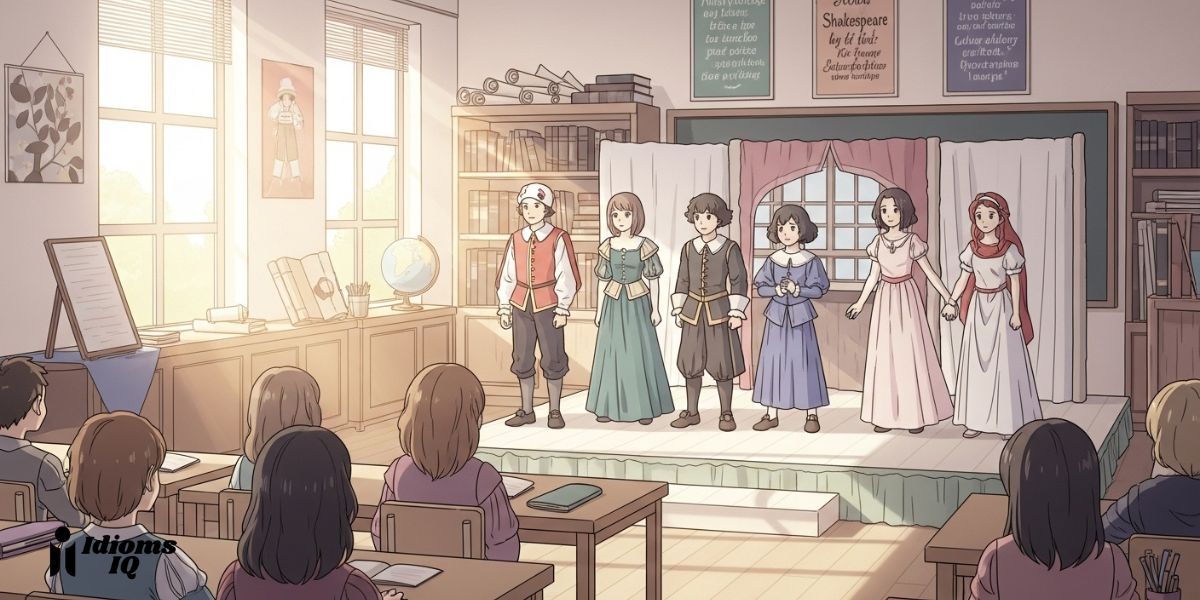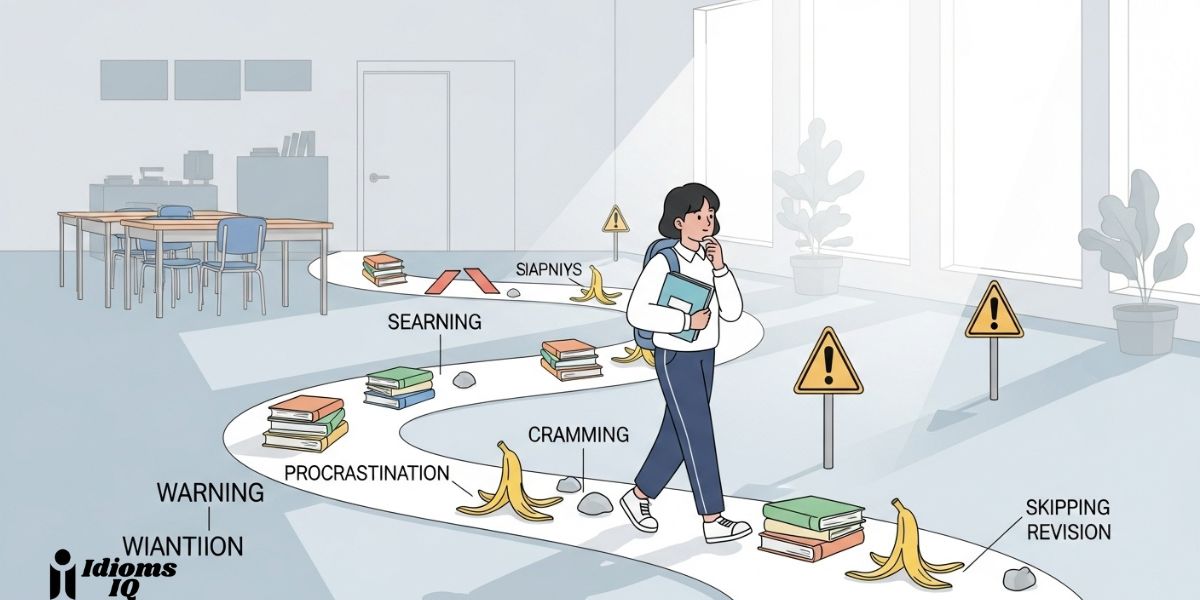Extended metaphors are a key tool in literature and modern writing. They help writers make complex comparisons between different ideas. This makes their stories more vivid and engaging for readers.
Authors use metaphorical comparisons to share deep ideas and feelings. This way, they can express a lot with just a few words. Extended metaphors are a powerful tool for creating unique and thought-provoking stories.
Key Takeaways
- Understanding the role of extended metaphors in literature and modern writing.
- Recognizing the impact of metaphorical comparisons on narrative depth.
- Exploring how extended metaphor examples can enhance writing.
- Learning to identify and analyze extended metaphors in various texts.
- Applying the literary device of extended metaphor in your own writing.
Understanding Extended Metaphors: Definition and Purpose
To fully appreciate extended metaphors, we need to know what they are and why they matter. An extended metaphor is a literary device that uses a single metaphor or analogy for a long time. It can span several sentences, paragraphs, or even the whole work.
Unlike simple metaphors, extended metaphors tell a detailed story. They make the text richer and more engaging. This tool helps authors dive deep into their subjects, giving readers a deeper understanding.
What Makes a Metaphor “Extended”
An extended metaphor is when a metaphor is stretched out in a text. It’s not just a quick comparison. It involves repeating and changing the metaphor, adding related images, and exploring different sides of the comparison.
Creating an extended metaphor is an art. It’s about keeping the core idea while making it grow. This balance makes the narrative richer and more engaging.
The Power of Sustained Comparison
The strength of sustained comparison is in its ability to engage readers deeply. By keeping a metaphor going, authors can explore their subject in detail. This creates a deeper connection with the reader.
Extended comparisons also help convey complex ideas and feelings in a subtle yet powerful way. This makes the reading experience more immersive. Readers are encouraged to think deeply about the metaphor and its meaning.
| Characteristics | Simple Metaphor | Extended Metaphor |
| Length | Typically confined to a single line or phrase | Extended over multiple sentences, paragraphs, or the entirety of a work |
| Complexity | Simple and direct comparison | Complex and layered, with multiple facets of comparison |
| Impact | Immediate, but potentially superficial understanding | Deeper, more nuanced understanding through sustained comparison |
In conclusion, understanding extended metaphors means knowing their definition and purpose. It’s about recognizing what makes a metaphor extended and the power of sustained comparison. This knowledge helps both readers and writers to fully enjoy this literary device.
Extended Metaphor Examples in Classic Literature
Classic authors have used extended metaphors to share deep ideas and feelings. This tool helps writers craft stories that touch readers on many levels. It makes their work rich and layered.
Related: Common Metaphor Examples
The Theatrical World of Shakespeare

Shakespeare’s “All the World’s a Stage” is a key example of this. In As You Like It, he sees life as a play. People act out different roles as they grow older.
“All the world’s a stage, and all the men and women merely players. They have their exits and their entrances, and one man in his time plays many parts…”
William Shakespeare, As You Like It
Shakespeare talks about the seven ages of man in this monologue. Each age is like a different act in life’s play.
Key aspects of this extended metaphor include:
- Life is seen as a stage, showing how we perform our lives.
- People play different roles as they age, showing life’s stages.
- Life is short, as characters come and go on stage.
John Donne and the Metaphysical Poetry
John Donne, known for metaphysical poetry, often used extended metaphors. In “The Flea,” he compares a flea to love, showing how deep and spiritual love can be.
The poem starts with: “Mark but this flea, and mark in it, / How little that which thou deniest me is; / It sucked me first, and now sucks thee, / And in this flea our two bloods mingled be.”
The extended metaphor in “The Flea” has several roles:
- It makes a striking comparison that grabs the reader’s attention.
- It shows the deep bond between the speaker and their loved one, beyond physical touch.
- It talks about love as a strong, uniting force.
Allegories as Extended Metaphors in Novels
Allegories are extended metaphors in many classic novels. They use symbols to share moral, philosophical, or political messages.
In The Pilgrim’s Progress by John Bunyan, Christian’s journey is an allegory for finding salvation. The obstacles and characters he meets symbolize spiritual challenges and temptations.
Characteristics of allegorical extended metaphors include:
- They use symbols to represent abstract ideas or concepts.
- They have layered meanings, inviting readers to see different interpretations.
- They explore complex themes and moral lessons through metaphor.
Extended Metaphor Examples in Modern Writing
Extended metaphors are key in today’s writing, found in fiction, poetry, film, and digital media. They help authors create deep stories that grab readers and share complex ideas in a way we can all get.
Contemporary Fiction and Poetry
In today’s fiction, metaphors tackle big themes and feelings. For example, The Handmaid’s Tale by Margaret Atwood is a metaphor for a scary future, showing us about control and fightback. Poets like Sylvia Plath use metaphors to share hard-to-grasp ideas through images we can see, like the bell jar symbolizing being trapped.
Authors today use metaphors to make their stories richer. In The Brief Wondrous Life of Oscar Wao by Junot Díaz, the “fuku” metaphor dives into identity, culture, and being an immigrant. This metaphor makes the story deeper, helping us understand the main character’s journey.
Extended Metaphors in Film and Television
Metaphors aren’t just for books; they’re in movies and TV too. In The Matrix (1999), the idea of a fake world is a deep dive into what’s real and our choices. The Wachowskis use this metaphor to explore big ideas, making the movie a food for thought.
Shows like Black Mirror use metaphors to talk about today’s world. For example, “Nosedive” critiques social media by using a rating system metaphor. This metaphor runs through the episode, offering a sharp look at our culture.
Digital Media and Social Commentary

In digital media, metaphors help share big ideas in a fun, easy way. Creators online use metaphors to explain complex topics simply. For instance, calling the internet an “ocean” helps talk about privacy and the endless sea of online info.
Examples of Extended Metaphors in Modern Media
| Medium | Example | Metaphorical Meaning |
| Literature | Margaret Atwood’s The Handmaid’s Tale | Dystopian society as a commentary on oppression |
| Film | The Matrix (1999) | Simulated reality as a commentary on free will |
| Television | Black Mirror – “Nosedive” | Social rating system as a commentary on social media |
| Digital Media | Comparing the internet to an “ocean” | Vastness and depth of online information |
Looking at these examples, it’s clear that metaphors are still a key part of modern writing. They help creators make stories that connect with people through different media.
Crafting Effective Extended Metaphors in Your Writing
Extended metaphors can make your writing richer and more engaging. They draw readers in, making your story unforgettable. To use them well, you need to know how to craft them.
Choosing the Right Metaphorical Vehicle
The metaphorical vehicle is key to your metaphor’s success. It’s what carries the meaning of your story. A good vehicle should be relevant, relatable, and full of meaning. For example, using a journey through a tough landscape can show the struggles of growing up.
“The metaphor is a bridge between the familiar and the unfamiliar, allowing readers to grasp complex ideas through more tangible concepts.”
Developing and Sustaining Your Extended Metaphor
After picking your vehicle, you need to keep it going in your story. This means using the metaphor in different parts of your narrative. Keeping it consistent is crucial. You should also bring it up again at key moments to keep it fresh for your readers.
- Start by introducing your metaphor clearly and contextually.
- Develop your metaphor by adding layers of meaning and complexity.
- Sustain your metaphor by consistently referencing it throughout your narrative.
Common Pitfalls to Avoid

Extended metaphors can be powerful, but there are traps to watch out for. One mistake is making the metaphor too long or clichéd. Another is not blending it smoothly into your story. To avoid these, find a balance between creativity and clarity.
By picking the right vehicle, keeping your metaphor strong, and avoiding common mistakes, you can make your writing shine. This will not only make your story better but also connect with your readers on a deeper level.
Conclusion
Extended metaphors are a key tool in writing, making stories richer and more engaging. They help authors share complex ideas and feelings in a unique way. This makes reading more enjoyable and meaningful.
Looking at both classic and modern examples, we see how metaphors add depth to stories. The secret to great metaphors is picking the right one and keeping it consistent. This makes the story more powerful and relatable.
In conclusion, learning about extended metaphors can make your writing better. It makes your stories more interesting and impactful. As you read and write more, remember the power of metaphors. They can make your stories come alive, giving readers a deeper experience.





